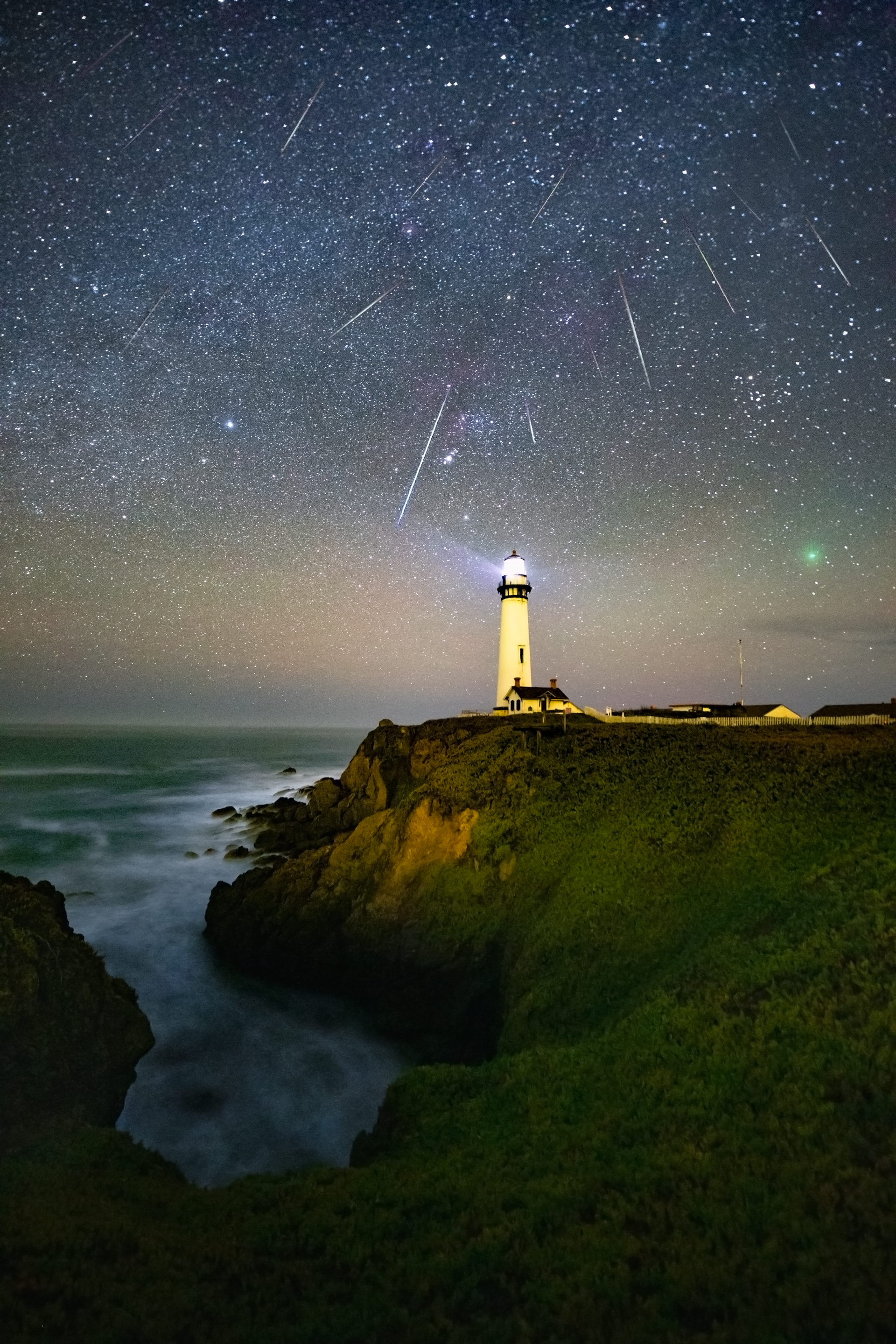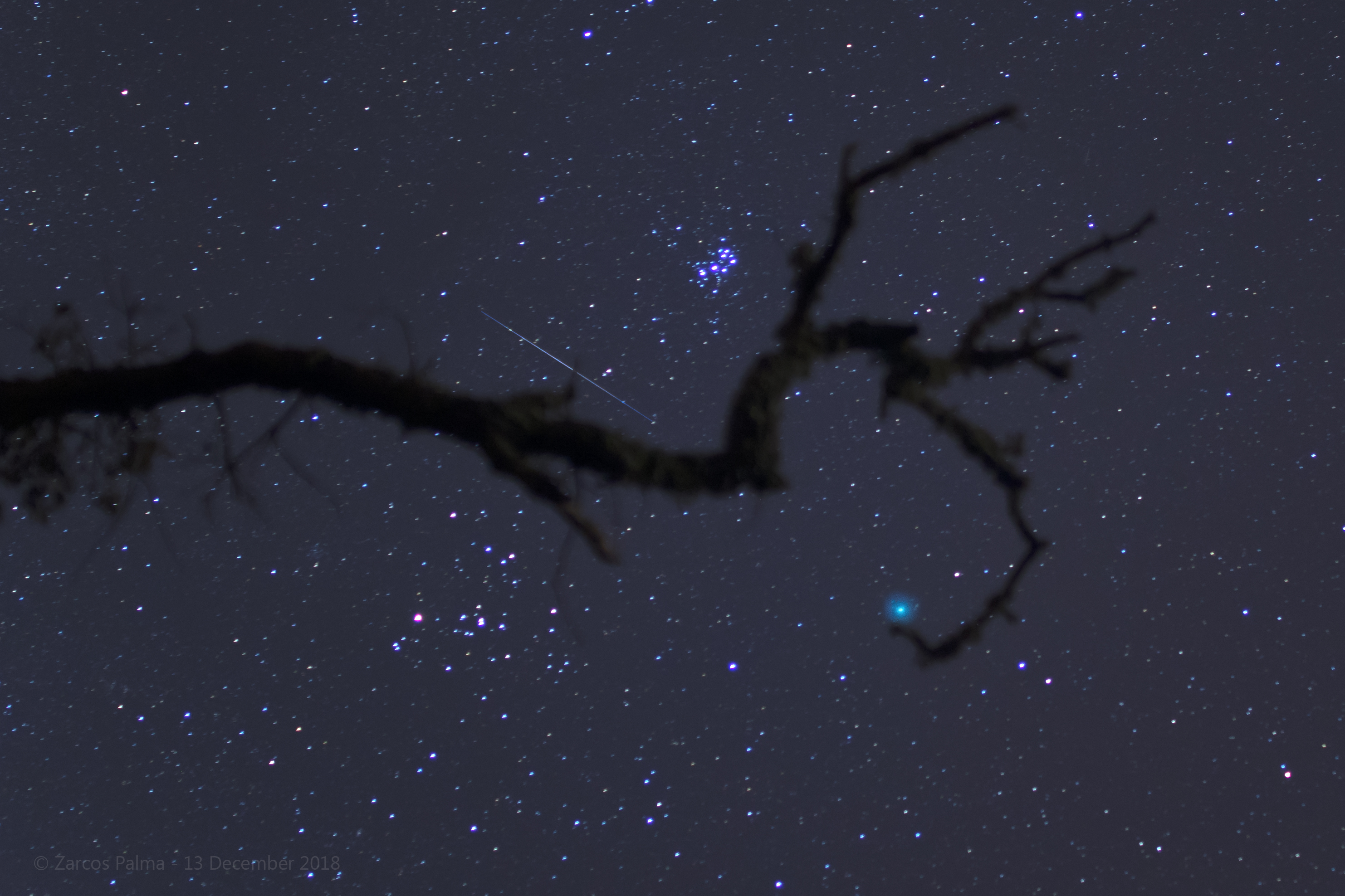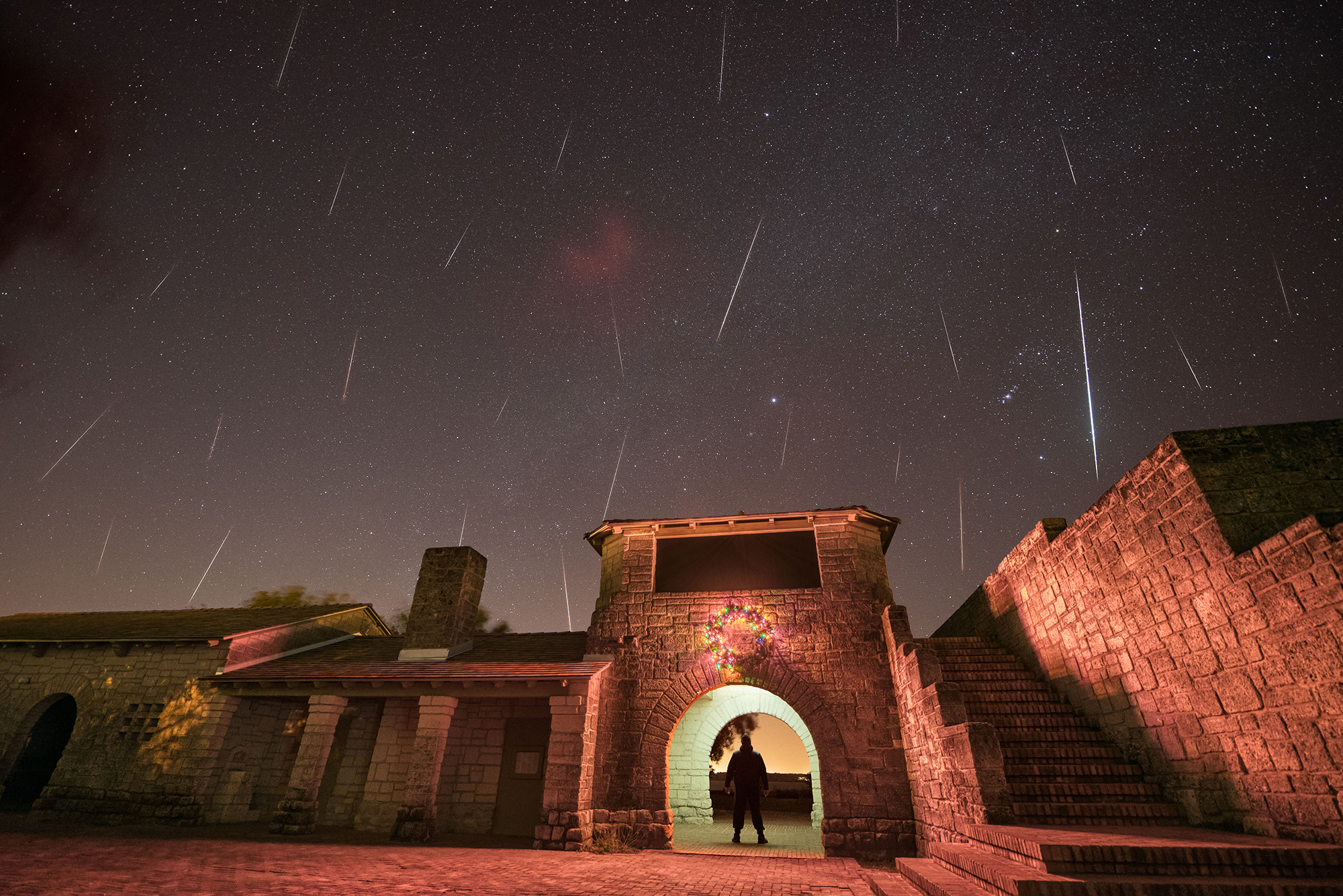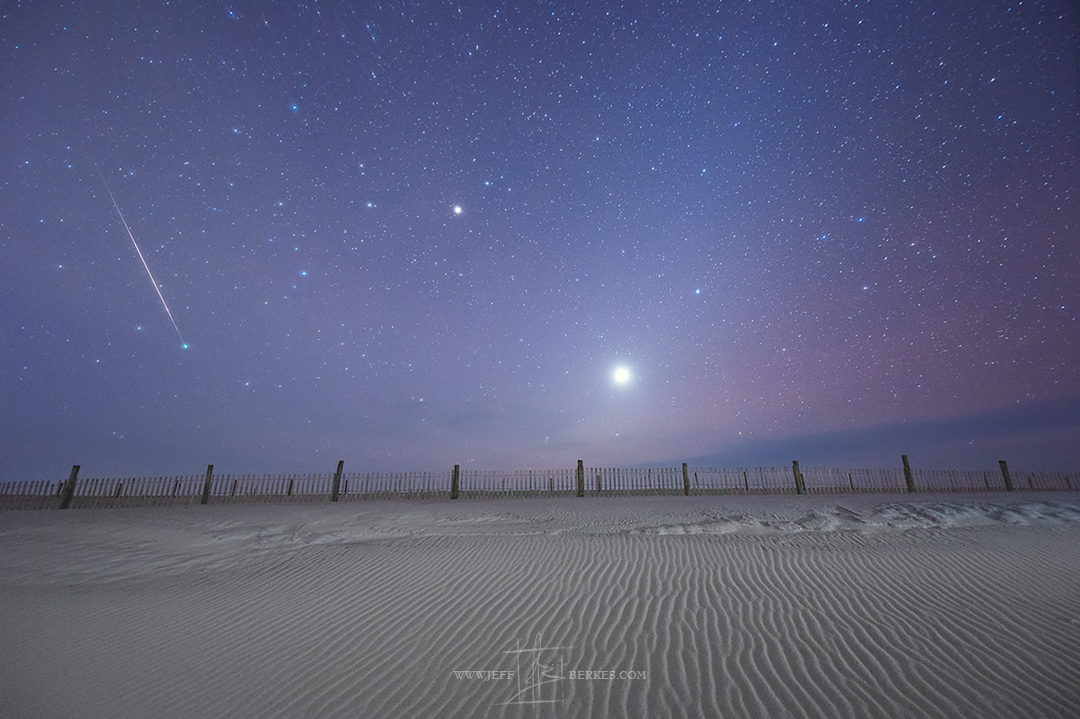Wow! Geminid Meteor Shower and Comet 46P Dazzle Skywatchers (Photos)

The Geminid meteor shower of 2018 has lived up to its reputation for being the most spectacular meteor shower of the year, and skywatchers around the world have captured some amazing views of the celestial firework display.
During the meteor shower's peak on Dec. 13-14, skywatchers could see up to 100 meteors per hour, weather permitting. Astrophotographers stayed up until the brink of dawn to capture the "shooting stars" and bright fireballs, or tiny pieces of space rock that burn up in the atmosphere as they fall toward Earth. These are fragments of the asteroid 3200 Phaethon. Every year in December, planet Earth passes through the asteroid's trail of dust and debris, and Geminid meteors rain down on Earth for a couple of weeks.
To put the icing on the cake, this year skywatchers had the chance to see a bright-green meteor in the night sky. Comet 46P/Wirtanen has been visible to the naked eye all month long, and it was at its brightest when it swung by Earth on Sunday (Dec. 15). In the photo above, taken by Shreenivasan Manievannan at a lighthouse in California, the cosmic "photobomber" is one of the brightest objects in the sky. [Awesome Photos! The Geminid Meteor Shower of 2018 in Pictures]
"I have always been obsessed with the Perseids, which are a much better visual experience with persistent trails and slow-moving, bright-green meteors," Manievannan told Space.com. "But the Geminids didn't disappoint, especially considering I was out a day before the actual peak night and considering the cloudy weather forecast across California. As a bonus, I got to see the green fuzzy dot on the right, which is the current brightest comet in the sky, 46P."

In Portugal, astrophotographer José Zarcos Palma captured a Geminid meteor along with Comet 46/Wirtanen, both gleaming behind the silhouette of a holm oak tree branch. But that's not all! Palma's photo also shows the Pleiades star cluster (above the tree branch), and the bright-orange star Aldebaran forms a nearly equilateral triangle with the Pleiades and the comet.

Dozens of Geminid meteors can be seen in a composite image by astrophotographer Sergio Garcia Rill (above). Rill photographed the meteor shower from Lake Corpus Christi State Park in Mathis, Texas. He programmed his camera to take a photo every 10 seconds for 3 hours and combined all the meteors he captured into one frame, creating an image that looks like the meteor shower is literally showering meteors all across the sky.

While shooting some "shooting stars" from Assateague Island National Seashore in Maryland, astrophotographer Jeff Berkes captured a brilliant fireball above his campsite at about 2:30 a.m. local time.
Get the Space.com Newsletter
Breaking space news, the latest updates on rocket launches, skywatching events and more!
"I had just sat my camera to hopefully capture a reflection of a meteor in the ocean and planned on leaving my camera there shooting for at least 2 hours," Berkes told Space.com. "I put the camera down and hit the shutter, 4 second later this bright fireball came streaking down leaving a reflection in the water. It was certainly the brightest Geminid I saw over my three-night stay."

A couple hours later, Berkes captured another fireball. Although the green spot at the tip of the meteor's tail looks a lot like the bright-green glow of Comet 46P/Wirtanen, it's actually coming from the meteor. "This meteor exploded five times on the way in and the final 'POP' was a bright green as seen on the end on the trail," Berkes told Space.com.
Although the Geminid meteor shower is over, you can still see Comet 46P/Wirtanen in the night sky for the rest of the year. And you don't have to wait long for the next meteor shower. The Ursid meteor shower — though not nearly as spectacular as the Geminids — is expected to peak on Dec. 21-22. Producing less than 10 meteors per hour, the Ursids probably aren't a good reason to stay up all night, especially because the full moon will likely outshine the fainter meteors.
Email Hanneke Weitering at hweitering@space.com or follow her @hannekescience. Follow us on Twitter @Spacedotcom and on Facebook. Original article on Space.com.
Join our Space Forums to keep talking space on the latest missions, night sky and more! And if you have a news tip, correction or comment, let us know at: community@space.com.

Hanneke Weitering is a multimedia journalist in the Pacific Northwest reporting on the future of aviation at FutureFlight.aero and Aviation International News and was previously the Editor for Spaceflight and Astronomy news here at Space.com. As an editor with over 10 years of experience in science journalism she has previously written for Scholastic Classroom Magazines, MedPage Today and The Joint Institute for Computational Sciences at Oak Ridge National Laboratory. After studying physics at the University of Tennessee in her hometown of Knoxville, she earned her graduate degree in Science, Health and Environmental Reporting (SHERP) from New York University. Hanneke joined the Space.com team in 2016 as a staff writer and producer, covering topics including spaceflight and astronomy. She currently lives in Seattle, home of the Space Needle, with her cat and two snakes. In her spare time, Hanneke enjoys exploring the Rocky Mountains, basking in nature and looking for dark skies to gaze at the cosmos.









